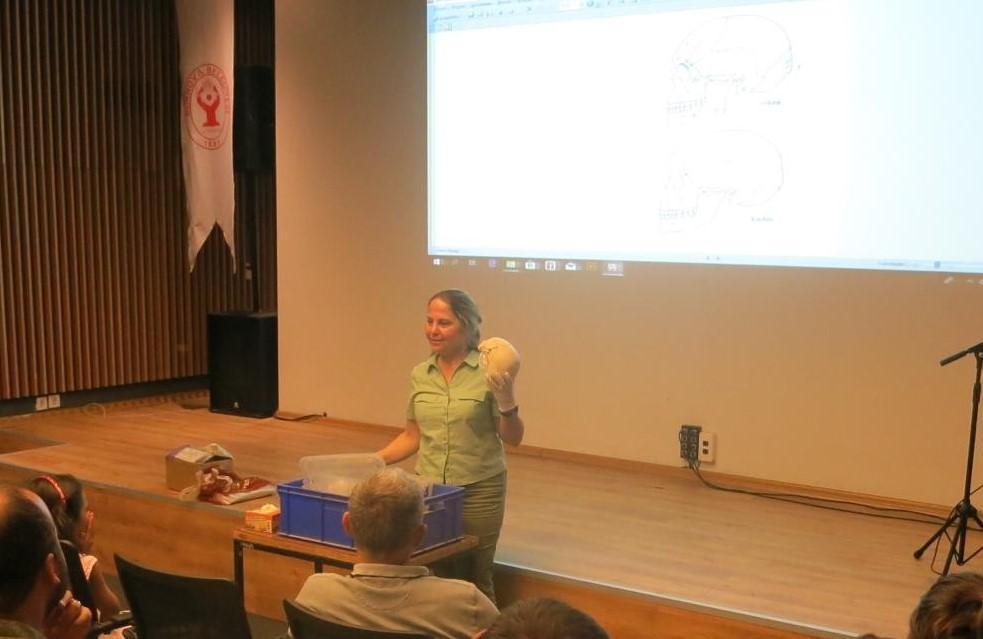
The results of a Türkiye-based genetics project were published in the Science Journal, one of the world’s respected scientific journals, as three related articles on Aug. 25 and 26.
For the project, Turkish anthropologist and Associate Professor Songül Alpaslan-Roodenberg studied the finds unearthed during the 15-year archaeological excavations in the Ilıpınar Mound in the Marmara province of Bursa’s Orhangazi district.
Alpaslan-Roodenberg, who is part of the scientific team of the David Reich Laboratory in the Department of Harvard Genetics and personally carried out studies in Türkiye and some Balkan countries in terms of anthropology and genetics, worked as co-chairman in the Türkiye section of the project, together with the head of the laboratory, David Reich.
Alpaslan-Roodenberg is one of the two lead authors of the article, published in the Science journal, along with the computer engineer and geneticist Losif Lazaridis from Harvard University. Two other important authors are Professor Ron Pinhasi, the head of the Department of Anthropology at the University of Vienna, and David Reich. In addition to the four authors, over 200 anthropologists, museologists and geneticists also contributed significantly to the article.
Stating that in the late 1980s, the Dutch Archeology Institute Director Jacob Roodenberg initiated archaeological excavations in Ilıpınar, Alpaslan-Roodenberg said: “Since the cultures of the Marmara region are similar to the Balkan cultures of the same period, one of the purposes of Jacob Roodenberg in this project, in which the Ilıpınar Mound and several Neolithic mounds in the region were excavated from the late 1980s to the early 2000s, was to find out whether this culture went to the Balkans and Central Europe from this region. In 2014, eight-year research into ancient DNA was initiated by the Harvard Department of Genetics.”
Speaking about the research, Alpaslan-Roodenberg said: “Whether the producers of these cultures, that is, these people, migrated to Europe from this region, could only be answered in the mid-2010s with the progress of ancient DNA research. Now thanks to the new generation ancient DNA sequencing methods, by analyzing very little DNA obtained from ancient human bones, we can follow the migration routes of ancient societies, and obtain information about their physical appearances, such as hair, eye, skin color, their connection with each other, family and kinship relations. We can learn the answers to many questions.”
“In 2015-2016, a group of scientists from the Harvard Ancient DNA Laboratory detected a genetic link between the people living in the Orhangazi Ilıpınar, Menteşe and Barcın mounds in the Marmara Region and the first farmers of Central Europe, and the results were published in the Nature journal. Therefore, it was proved for the first time that not only the culture but also the people went to Europe from this region. In other words, if you choose random people from the street in central Europe, for example in Germany, and analyze their DNA, you will see that one out of five people still carries the genes of these first farmers of Anatolia,” she added.
Alpaslan-Roodenberg, who also stated that Jacob Roodenberg’s thesis was proven with the help of genetics today, said that she examined and analyzed the bones of the first farmers unearthed during the excavations in the Marmara region.
“We have worked in collaboration with the Harvard and Vienna Ancient DNA laboratories since 2008, and I personally took part in the scientific team of both laboratories. Small bone samples taken from some excavations in all geographical regions of Türkiye since 2014, were analyzed in the ancient DNA laboratories in Vienna and Harvard with the latest methods, and the results were recently published in the latest issue of Science journal. The study was conducted with the participation of more than 200 authors, mostly anthropologists and archaeologists from Türkiye and its neighboring countries and the Balkans. About 35 museum professionals and academics from Türkiye also took part,” she said.
She stated that the ancient genetic profile of Anatolia from the Neolithic period to the Ottoman Empire was revealed in the study, and added: “The analysis results of this very important study reveal that there were two migrations to Anatolia in the Neolithic period. In addition, this study, which also genetically investigated the roots of the Indo-European language family, gives signs that the origins of this language may be in the steppes and the Caucasus.”
“An interesting finding is that there was no steppe origin in Anatolia until the Bronze Age, which also raises the question of why Anatolia was not open to migrations from the north. Only new studies and analyzes can give a clear answer to these questions. Because there were Hittites in the Bronze Age in Anatolia and these people spoke a language that entered the Indo-European language family. How did that happen? New studies will reveal this,” she said.
Alpaslan-Roodenberg stated that another finding is that the Van-centered Urartian civilization in Eastern Anatolia originated in the Levant and Anatolia. “The analysis of the samples from the Van region proved that the Urartians came from the earlier societies in the region and originated from the Levant, while the samples taken from the extensions of the Urartians in today’s Armenia showed that they were of local origin and steppe origin,” she said.